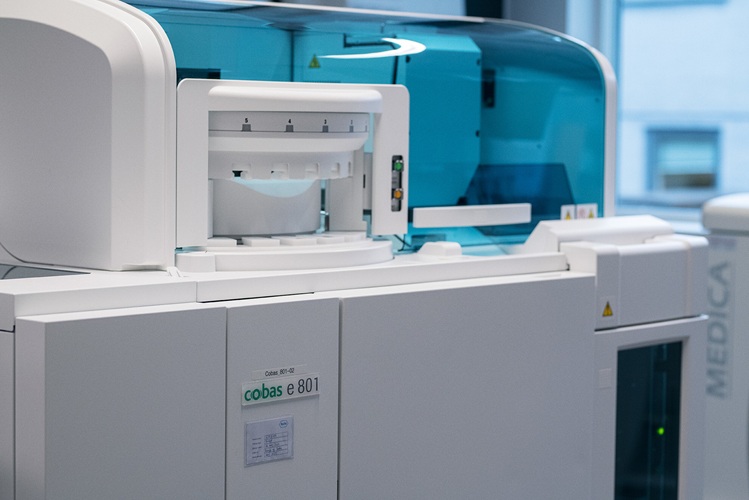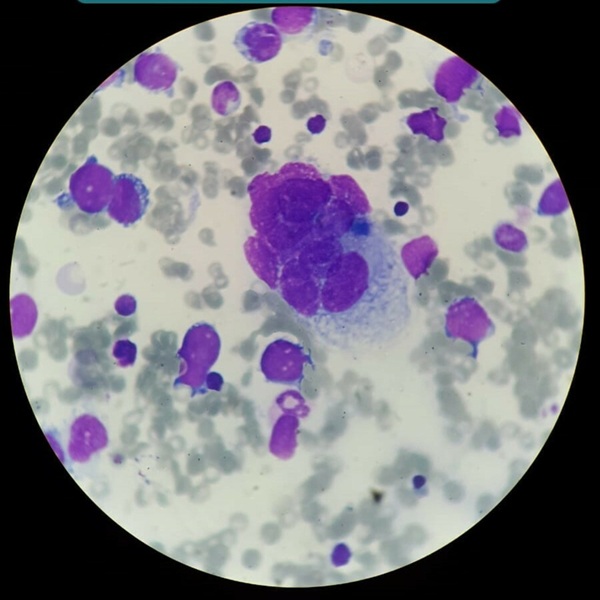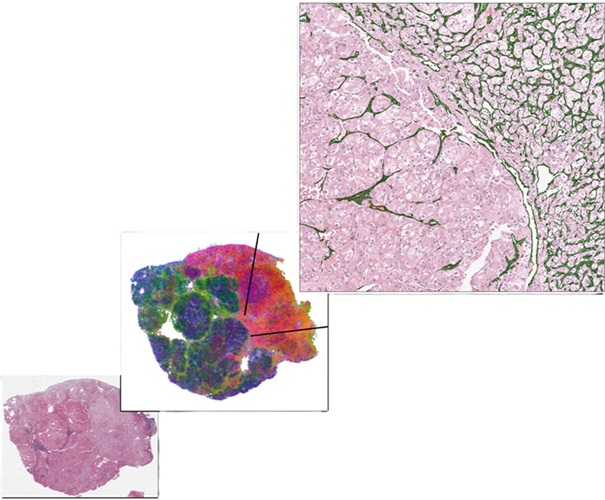New Heart Attack Test Better Informs Underlying Condition
|
By LabMedica International staff writers Posted on 27 Mar 2018 |
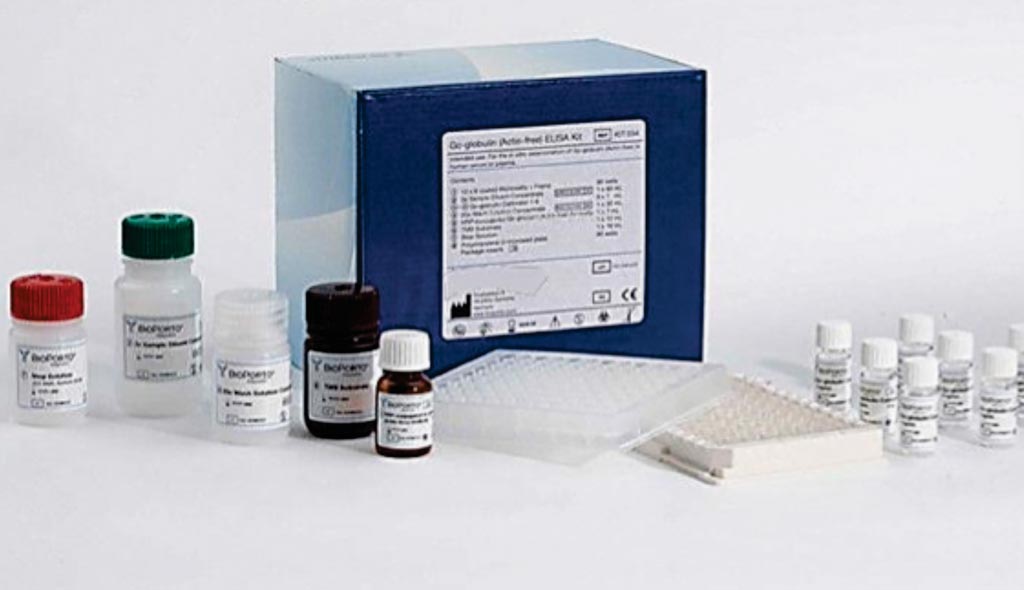
Image: A cardiac troponin I sandwich enzyme-linked immunosorbent assay (ELISA) kit (Photo courtesy of Cell Biolabs).
The serum troponin assay is the biochemical gold standard for detecting myocardial infarction (MI). A major diagnostic issue is that some believe troponin levels can rise with reversible injury, in the absence of radiologically detectable infarct.
Cardiac troponin is a protein unique to the heart, so elevated levels in the blood indicate that the heart has been damaged. The cardiac troponin blood test is still the current gold standard test used for the clinical diagnosis of MI or death of heart muscle due to lack of blood supply, but the test does not indicate the extent of cardiac damage.
Medical scientists at the University of Alberta Faculty of Medicine & Dentistry (Edmonton, AB, Canada) hypothesized that because cell death activates intracellular proteases, troponin released by irreversible infarct will be more proteolyzed than that released by milder processes. Their goal was to quantify proteolytic digestion of cardiac troponin I in patients with varying degrees of myocardial injury.
The team analyzed serum or plasma samples from 29 patients with cardiac troponin I elevations for proteolytic degradation, using three different sandwich enzyme-linked immunosorbent assays (ELISAs) designed to specifically detect the N-terminal, core, or C-terminal regions of cardiac troponin I. As predicted, the degree of proteolytic digestion increased with increasing severity of injury, as estimated by the total troponin level, and this trend was more pronounced for C-terminal versus N-terminal degradation. The highest degree of proteolytic digestion was observed in patients with ST-elevation MI; the least, in type 2 MI which is supply–demand ischemia rather than acute thrombus formation.
The authors concluded that the proteolytic degradation pattern of cardiac troponin I may be a better indicator of clinically significant MI than total serum troponin level. Distinguishing between intact and degraded forms of troponin may be useful for (a) identifying those patients with clinically significant infarct in need of revascularization, (b) monitoring intracellular proteolysis as a possible target for therapeutic intervention, and (c) providing an impetus for standardizing the epitopes used in the troponin I assay.
Peter M. Hwang, MD, an assistant professor and lead investigator of the study, said, “We postulated that when cells die during a heart attack, not only would they release troponin into the bloodstream, but they would also digest the troponin through the action of activated intracellular proteases, enzymes that digest other proteins. As predicted, we found that the degree of proteolytic digestion increased with increasing severity of heart injury.” The study was published in the February 2018 issue of the Journal of Applied Laboratory Medicine.
Related Links:
University of Alberta Faculty of Medicine & Dentistry
Cardiac troponin is a protein unique to the heart, so elevated levels in the blood indicate that the heart has been damaged. The cardiac troponin blood test is still the current gold standard test used for the clinical diagnosis of MI or death of heart muscle due to lack of blood supply, but the test does not indicate the extent of cardiac damage.
Medical scientists at the University of Alberta Faculty of Medicine & Dentistry (Edmonton, AB, Canada) hypothesized that because cell death activates intracellular proteases, troponin released by irreversible infarct will be more proteolyzed than that released by milder processes. Their goal was to quantify proteolytic digestion of cardiac troponin I in patients with varying degrees of myocardial injury.
The team analyzed serum or plasma samples from 29 patients with cardiac troponin I elevations for proteolytic degradation, using three different sandwich enzyme-linked immunosorbent assays (ELISAs) designed to specifically detect the N-terminal, core, or C-terminal regions of cardiac troponin I. As predicted, the degree of proteolytic digestion increased with increasing severity of injury, as estimated by the total troponin level, and this trend was more pronounced for C-terminal versus N-terminal degradation. The highest degree of proteolytic digestion was observed in patients with ST-elevation MI; the least, in type 2 MI which is supply–demand ischemia rather than acute thrombus formation.
The authors concluded that the proteolytic degradation pattern of cardiac troponin I may be a better indicator of clinically significant MI than total serum troponin level. Distinguishing between intact and degraded forms of troponin may be useful for (a) identifying those patients with clinically significant infarct in need of revascularization, (b) monitoring intracellular proteolysis as a possible target for therapeutic intervention, and (c) providing an impetus for standardizing the epitopes used in the troponin I assay.
Peter M. Hwang, MD, an assistant professor and lead investigator of the study, said, “We postulated that when cells die during a heart attack, not only would they release troponin into the bloodstream, but they would also digest the troponin through the action of activated intracellular proteases, enzymes that digest other proteins. As predicted, we found that the degree of proteolytic digestion increased with increasing severity of heart injury.” The study was published in the February 2018 issue of the Journal of Applied Laboratory Medicine.
Related Links:
University of Alberta Faculty of Medicine & Dentistry
Latest Clinical Chem. News
- AI-Powered Blood Test Accurately Detects Ovarian Cancer
- Automated Decentralized cfDNA NGS Assay Identifies Alterations in Advanced Solid Tumors
- Mass Spectrometry Detects Bacteria Without Time-Consuming Isolation and Multiplication
- First Comprehensive Syphilis Test to Definitively Diagnose Active Infection In 10 Minutes
- Mass Spectrometry-Based Monitoring Technique to Predict and Identify Early Myeloma Relapse
- ‘Brilliantly Luminous’ Nanoscale Chemical Tool to Improve Disease Detection
- Low-Cost Portable Screening Test to Transform Kidney Disease Detection
- New Method Uses Pulsed Infrared Light to Find Cancer's 'Fingerprints' In Blood Plasma
- Carbon Nanotubes Help Build Highly Accurate Sensors for Continuous Health Monitoring
- Paper-Based Device Boosts HIV Test Accuracy from Dried Blood Samples
- AI-Powered Raman Spectroscopy Method Enables Rapid Drug Detection in Blood
- Novel LC-MS/MS Assay Detects Low Creatinine in Sweat and Saliva
- Biosensing Technology Breakthrough Paves Way for New Methods of Early Disease Detection
- New Saliva Test Rapidly Identifies Paracetamol Overdose
- POC Saliva Testing Device Predicts Heart Failure in 15 Minutes

- Screening Tool Detects Multiple Health Conditions from Single Blood Drop
Channels
Molecular Diagnostics
view channel
POC Diagnostic Platform Combines Immunoassay and Molecular Testing
An innovative diagnostic platform offers superior sensitivity across all sample types, including blood, compared to existing rapid tests, while maintaining a low-cost, user-friendly design.... Read more
Single Blood Test Could Detect Different Types of Cancer at Early Stages
Currently, reliable screening for only a few types of cancer is available, such as those affecting the breast, bowel, cervix (neck of the womb), and lung for individuals at high risk. While these screenings... Read moreHematology
view channel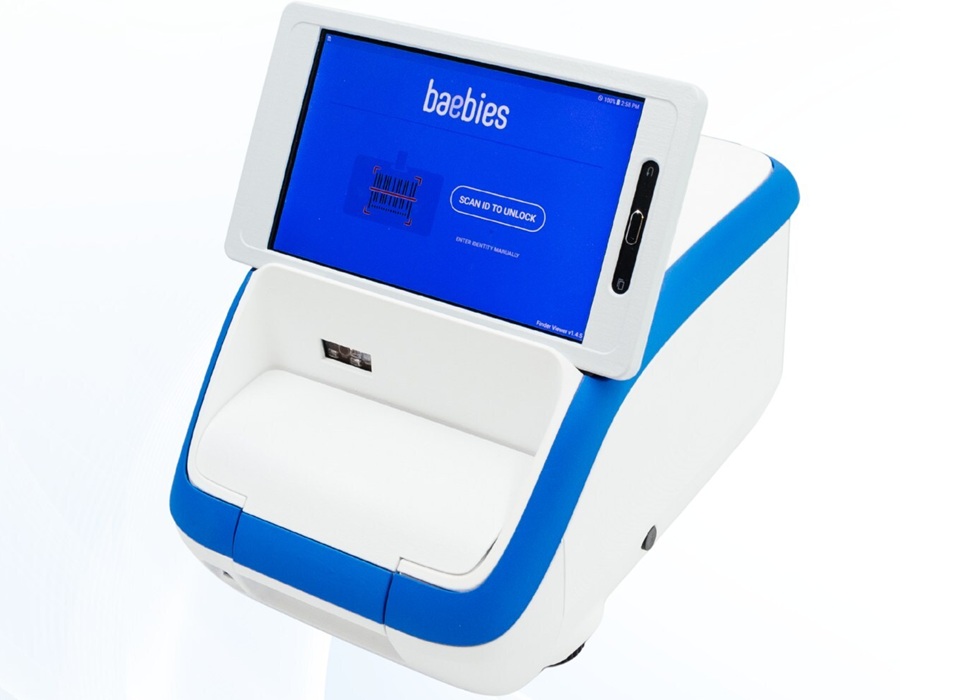
First Point-of-Care Heparin Monitoring Test Provides Results in Under 15 Minutes
Heparin dosing requires careful management to avoid both bleeding and clotting complications. In high-risk situations like extracorporeal membrane oxygenation (ECMO), mortality rates can reach about 50%,... Read more
New Scoring System Predicts Risk of Developing Cancer from Common Blood Disorder
Clonal cytopenia of undetermined significance (CCUS) is a blood disorder commonly found in older adults, characterized by mutations in blood cells and a low blood count, but without any obvious cause or... Read moreImmunology
view channel
Stem Cell Test Predicts Treatment Outcome for Patients with Platinum-Resistant Ovarian Cancer
Epithelial ovarian cancer frequently responds to chemotherapy initially, but eventually, the tumor develops resistance to the therapy, leading to regrowth. This resistance is partially due to the activation... Read more
Machine Learning-Enabled Blood Test Predicts Immunotherapy Response in Lymphoma Patients
Chimeric antigen receptor (CAR) T-cell therapy has emerged as one of the most promising recent developments in the treatment of blood cancers. However, over half of non-Hodgkin lymphoma (NHL) patients... Read moreMicrobiology
view channel
New Blood Test Detects Up to Five Infectious Diseases at POC
Researchers have developed a prototype flow-through assay capable of detecting up to five different infections, with results that can be quickly analyzed and transmitted via a specialized smartphone app.... Read more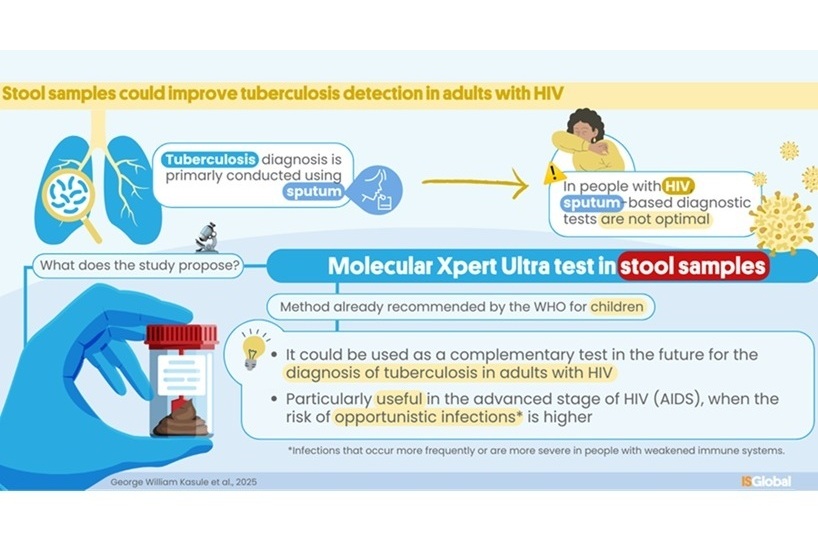
Molecular Stool Test Shows Potential for Diagnosing TB in Adults with HIV
Tuberculosis (TB), caused by the bacterium Mycobacterium tuberculosis, led to 1.25 million deaths in 2023, with 13% of those occurring in people living with HIV. The current primary diagnostic method for... Read morePathology
view channel
Groundbreaking Chest Pain Triage Algorithm to Transform Cardiac Care
Cardiovascular disease is responsible for a third of all deaths worldwide, and chest pain is the second most common reason for emergency department (ED) visits. With EDs often being some of the busiest... Read more
AI-Based Liquid Biopsy Approach to Revolutionize Brain Cancer Detection
Detecting brain cancers remains extremely challenging, with many patients only receiving a diagnosis at later stages after symptoms like headaches, seizures, or cognitive issues appear. Late-stage diagnoses... Read moreTechnology
view channel
Advanced Predictive Algorithms Identify Patients Having Undiagnosed Cancer
Two newly developed advanced predictive algorithms leverage a person’s health conditions and basic blood test results to accurately predict the likelihood of having an undiagnosed cancer, including ch... Read more
Light Signature Algorithm to Enable Faster and More Precise Medical Diagnoses
Every material or molecule interacts with light in a unique way, creating a distinct pattern, much like a fingerprint. Optical spectroscopy, which involves shining a laser on a material and observing how... Read more
Disposable Microchip Technology Could Selectively Detect HIV in Whole Blood Samples
As of the end of 2023, approximately 40 million people globally were living with HIV, and around 630,000 individuals died from AIDS-related illnesses that same year. Despite a substantial decline in deaths... Read more
Pain-On-A-Chip Microfluidic Device Determines Types of Chronic Pain from Blood Samples
Chronic pain is a widespread condition that remains difficult to manage, and existing clinical methods for its treatment rely largely on self-reporting, which can be subjective and especially problematic... Read moreIndustry
view channel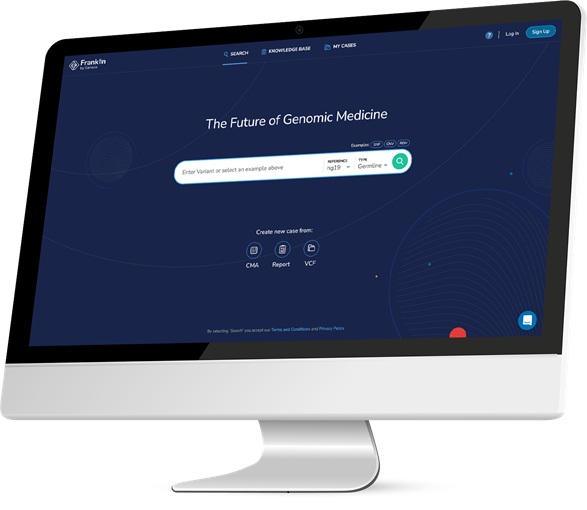
Qiagen Acquires NGS Analysis Software Company Genoox
QIAGEN (Venlo, the Netherlands) has signed a definitive agreement to acquire Genoox (Tel Aviv, Israel), a provider of artificial intelligence (AI)-powered software that enables clinical labs to scale and... Read more
Cepheid and Oxford Nanopore Technologies Partner on Advancing Automated Sequencing-Based Solutions
Cepheid (Sunnyvale, CA, USA), a leading molecular diagnostics company, and Oxford Nanopore Technologies (Oxford, UK), the company behind a new generation of sequencing-based molecular analysis technologies,... Read more
Grifols and Tecan’s IBL Collaborate on Advanced Biomarker Panels
Grifols (Barcelona, Spain), one of the world’s leading producers of plasma-derived medicines and innovative diagnostic solutions, is expanding its offer in clinical diagnostics through a strategic partnership... Read more











